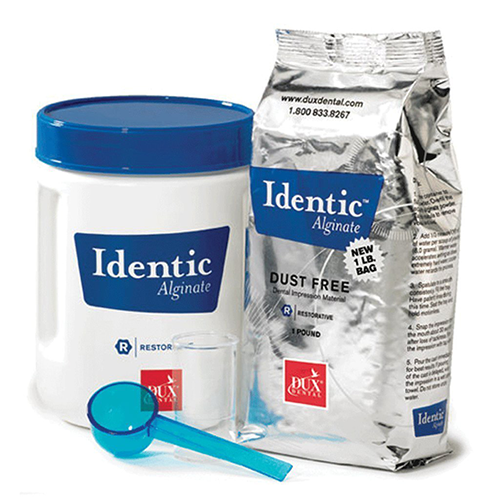
Definition of Alginate: Alginate, recognized as an irreversible hydrocolloid, constitutes colloid particles comprising alginic salt polymers. Through a chemical reaction, it transitions from a sol (liquid) to a gel (solid) state, resulting in the irreversible nature of the set impression.
Classification: Alginate impression material is categorized based on the rate of its setting reaction, leading to two primary classifications:
- Fast Set Alginates: Characterized by a shorter setting time of 1½-2 minutes, ideal for situations requiring expedited impressions.
- Regular Set Alginates: Offering a longer setting duration, typically around 4-5 minutes, allowing more time for manipulation during impression-taking procedures.
Setting Rate Factors: The setting rate of alginate is influenced by specific additives, such as trisodium phosphate, acting as retarders. Varied concentrations of these additives result in different setting times, thus leading to the classification of alginate into fast and regular set formulations.
Key Takeaways: Understanding the classification of alginate based on its setting characteristics is crucial for selecting the appropriate material tailored to the requirements of specific clinical scenarios, thereby ensuring optimal outcomes in dental impression procedures.
Characteristics of Alginate Impression Material
Presentation: Alginate is commonly available in powder form, conveniently packaged in packets or tubs, as depicted below:
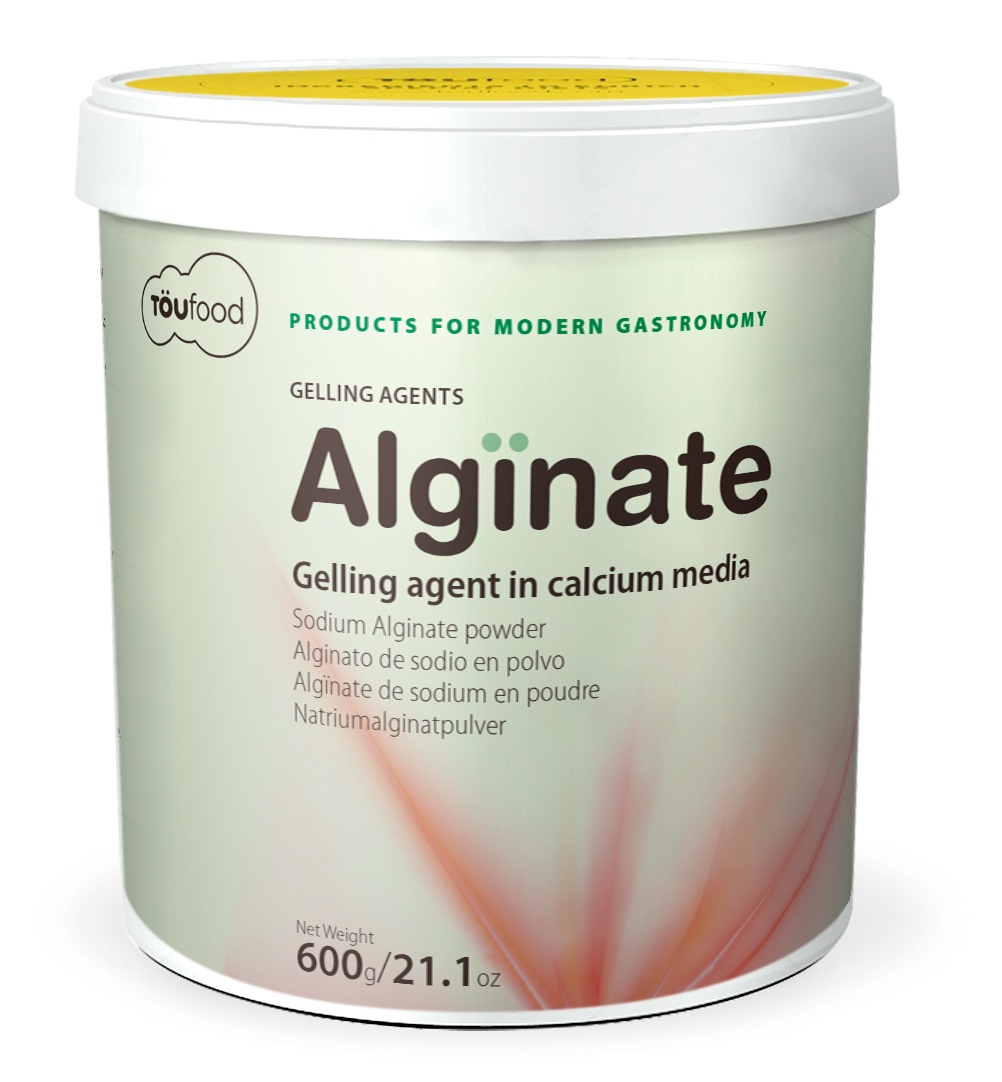
Composition: The composition of alginate powder comprises various constituents, each serving specific roles in the impression material. The key components are outlined in Table 8.1:
- Soluble Salt of Alginic Acid (12%): A carbohydrate compound, typically in the form of a potassium, sodium, or ammonium salt, which acts as a reactant with calcium sulfate.
- Calcium Sulfate (CaSO4) (12%): Reacts with the alginic salt to initiate the setting reaction.
- Tri Sodium Sulfate (Na3PO4): Serves as a retarder, influencing the setting time of the alginate.
- Potassium Sulfate (K2SO4) (2%): Enhances the surface properties of the gypsum formed during the setting reaction.
- Fillers (70% ZnO, Diatomaceous Earth): Strengthen the gel and contribute to its structural integrity.
- Potassium Fluorides and Titanium Fluoride: Improve the surface of the resulting model.
- Flavoring Agents: Incorporated for enhanced patient acceptability.
- Chemical Indicators: Facilitate manipulation by inducing color changes in response to pH alterations.
- Glycol: Included as an anti-dust agent.
- Glutaraldehyde: Serves as a disinfectant, ensuring the hygienic integrity of the impression material.
Key Considerations: Understanding the composition of alginate is essential for dental practitioners, as it influences the material’s properties and performance during impression-taking procedures, ultimately impacting the quality of dental restorations and prosthetic devices.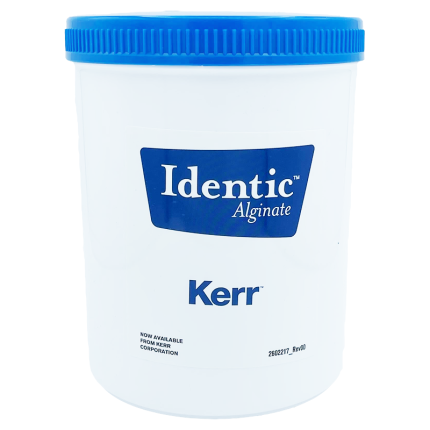
Manipulation Technique for Alginate Impression Material
Armamentarium: The tools required for manipulating alginate include a mixing bowl, water, alginate powder, and a stiff spatula.
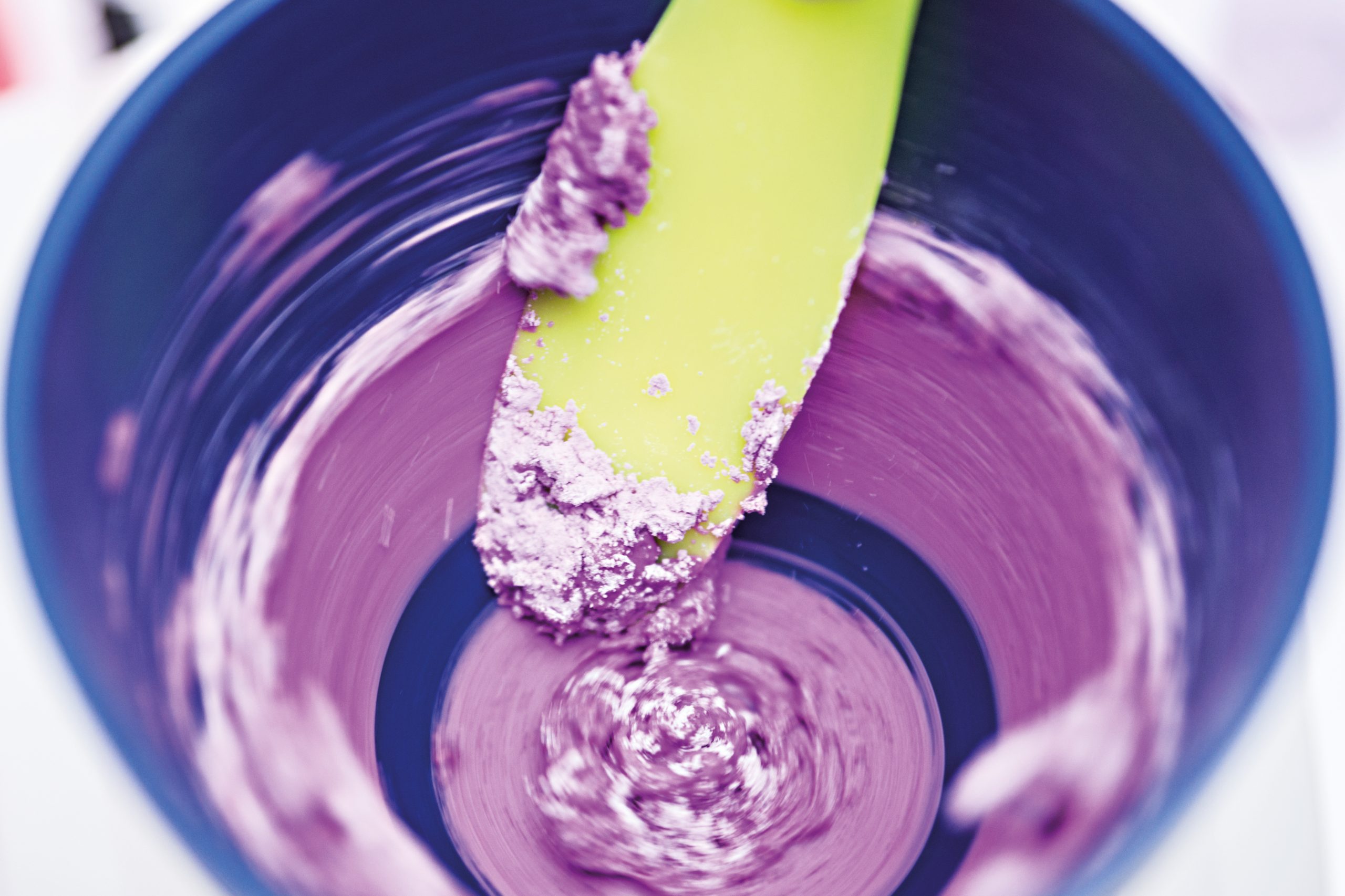
Mixing Process:
- Proportioning: Begin by measuring and placing water in the mixing bowl. Add the alginate powder at a ratio of 1 part powder to 2 parts water.
- Mixing: Use a stiff spatula to thoroughly mix the powder and water until a coherent mix, resembling a sol, is achieved. This ensures uniform dispersion of the powder particles in the water, forming a smooth and consistent mixture.
Step-by-Step Manipulation: The manipulation process of alginate involves the following steps:
- A: Proportion and add water to the bowl.
- B: Add alginate powder to the water.
- C: Mix the powder and water thoroughly until a homogeneous sol is formed.
- D: Ensure proper consistency and smoothness of the mixture before proceeding.
Key Considerations:
- Water should be added to the bowl first to minimize air entrapment in the sol, facilitating optimal mixing conditions.
- After gelation in the mouth, allow the impression to remain in place for 2 minutes post-set to enhance elasticity before removal. Sharp removal of the impression is recommended to prevent viscoelasticity, ensuring accurate reproduction of oral structures.
Post-Impression Steps:
- Rinse off any saliva from the impression under tap water to maintain cleanliness.
- Disinfection can be achieved using suitable agents such as 2% sodium hypochlorite (NaClO3) or iodophor sprays to ensure hygiene.
- Cover the impression with a wet napkin and store it in a closed plastic bag at 100% humidity to prevent dehydration.
- Casting should be done promptly after impression removal, ideally within 1 hour, to preserve the integrity of the impression.
Setting Reaction of Alginate Impression Material
Induction Reaction: Before the setting reaction of alginate takes place, there is an induction reaction that serves to delay gelation, providing an extended working time. This induction reaction involves the preferential reaction of tri-sodium phosphate (Na3PO4) with calcium sulfate (CaSO4), as depicted below:
Na3PO4+CaSO4→Induction Reaction
This initial reaction acts as a retarder, effectively delaying the onset of gelation and allowing the clinician sufficient time for manipulation and impression-taking procedures.
Gelation Reaction: Following the completion of the induction reaction, the setting reaction commences as the tri-sodium phosphate is depleted. At this stage, calcium sulfate reacts with the alginic salt present in the alginate material, leading to gelation. The gelation process results in the transformation of the alginate sol into a gel, forming the impression of the oral structures.
Change in Viscosity during Gelation
As the gelation reaction progresses, there is a notable increase in viscosity, indicating the transition from a sol-like consistency to a gel-like state. This transformation is indicative of the setting reaction occurring within the alginate impression material.
Properties of Alginate Impression Material
Alginate possesses several notable properties, some of which are akin to those of agar. Here are the key properties of alginate:
- Biocompatible: Alginate is non-toxic, non-irritating, non-allergenic, and non-carcinogenic, making it safe for use in dental applications.
- Fine Detail Recording: Its fluid nature allows alginate to accurately record fine details of oral structures, ensuring precision in impressions.
- Elasticity: Alginate exhibits elasticity, enabling it to be withdrawn from undercut areas in the mouth, although its tear strength may be limited.
- Dimensional Stability: Alginate may undergo dimensional changes if exposed to air, resulting in phenomena such as syneresis (loss of water) and imbibition (absorption of water), as well as drying shrinkage due to evaporation.
- Compatibility: Alginate is compatible with various model and die materials commonly used in dental laboratories, facilitating the creation of accurate replicas of oral structures.
- Taste and Flavor: Alginate typically has an acceptable taste and flavor, enhancing patient comfort during impression-taking procedures.
- Cost-Effectiveness: Alginate is relatively inexpensive compared to other impression materials, making it a cost-effective option for dental practices.
- Accelerated Setting: The setting reaction of alginate is accelerated by the presence of water and moisture, allowing for relatively quick setting times during impression-taking procedures.
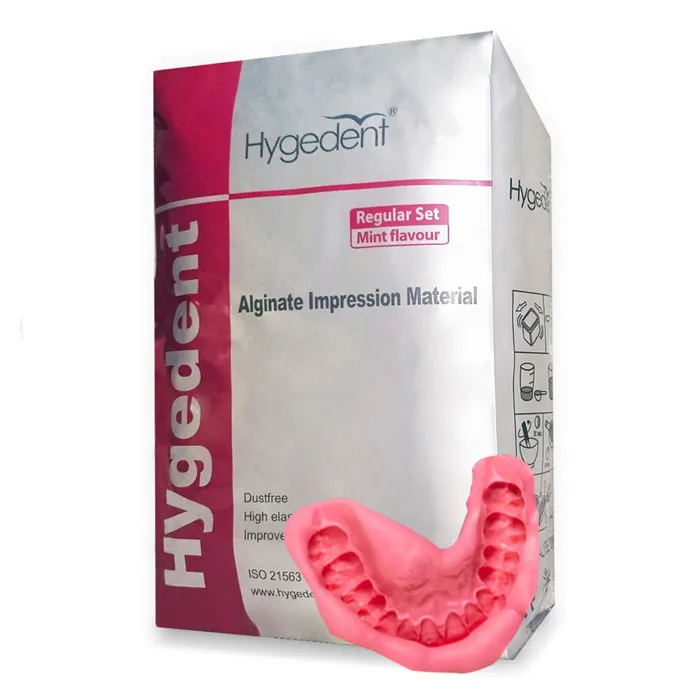 Uses of Alginate Impression Material
Uses of Alginate Impression Material
Alginate finds extensive application in dental practice for recording impressions in various scenarios. Its uses include:
- Study Models: Alginate impressions are commonly used to create study models, which are replicas of the patient’s dentition. These models are valuable for diagnostic purposes, treatment planning, and patient education.
- Preliminary Models: Dentate and edentulous arches can be accurately captured using alginate impressions to create preliminary models. These models serve as the initial framework for further dental procedures, such as the fabrication of prostheses or orthodontic appliances.
- Primary Impressions: Alginate is often employed to obtain primary impressions of edentulous arches, providing an initial record of the soft tissue anatomy. These impressions serve as a foundation for the fabrication of complete dentures or other removable prostheses.
- Secondary Impressions: Alginate impressions are utilized in orthodontics to capture secondary impressions for the fabrication of working casts. These impressions help orthodontists assess tooth positions, occlusion, and treatment progress accurately.
